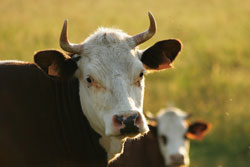Optimising milk production
The EC-funded BOVMAS project focussed on the genetic mapping of QTL associated with milk production in a number of cattle populations. The aim was to put together a comprehensive database of QTL map information as well as innovative marker assisted selection (MAS) methodologies. This type of insight could allow scientists in the future to select individual animals based on traits and thus maximise milk production from generation to generation. University of Milan researchers concentrated their efforts on the Italian Brown Swiss dairy cattle populations. Specific QTL maps for the Brown Swiss breed were not available prior to this project. Researchers tested for markers relating to milk yield and milk protein percentage; 29 and 19 markers were deemed significant respectively. Out of those, five markers were chosen for further study. The newly available information can be integrated into breeding methodologies across Europe aimed at improving milk production and quality across different cattle breeds.







